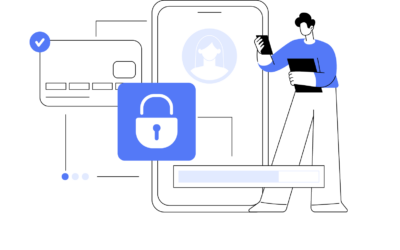Optimize Call Center Staffing

In the ever-evolving landscape of customer service, optimizing call center staffing plays a pivotal role in establishing a strong connection between businesses and their clients. Call center staffing is a critical aspect of contact center management, as it directly impacts customer satisfaction, response times, and overall operational efficiency. Striking the right balance between having enough agents to handle incoming inquiries and not overstaffing is a challenge faced by many contact center managers. In this blog post, we will explore the factors to consider when determining how many agents you need in a contact center to ensure optimal performance and customer experience.
Understanding Call Center Workload
Before diving into staffing considerations, you need to understand the workload that the contact center handles. Analyzing historical call data, peak hours, and anticipated call volumes helps predict incoming traffic patterns and fluctuations. This data-driven approach serves as a foundation for making informed decisions about staffing requirements.
Factors Influencing Staffing Levels
Average Handle Time (AHT): AHT represents the average duration an agent spends on a single customer interaction, including talk time, hold time, and any after-call work. By analyzing AHT, you can determine how much time each agent dedicates to assisting customers. This helps calculate the number of agents needed to meet service level objectives.
Service Level Objectives (SLOs): SLOs define the percentage of calls that agents should answer within a specific time frame. For example, 80% of calls answered within 20 seconds. SLOs set the standard for contact center efficiency and directly influence the number of agents required during peak hours.
Forecasted Call Volume: Accurate forecasting of call volumes during various periods (daily, weekly, and seasonally) is crucial for appropriate staffing. Advanced analytics tools can help predict call patterns based on historical data and external factors like marketing campaigns or public events.
Absenteeism and Attrition: You need to account for agent absenteeism and attrition rates when calculating staffing needs. Overstaffing to accommodate these fluctuations can be costly, so striking a balance is necessary.
Skillset and Agent Specialization: Understanding agent skills and their expertise in handling specific types of inquiries also impacts staffing. Specialized agents may be needed for technical support or more complex issues.
Multichannel Support: If your contact center handles interactions through various channels like phone calls, emails, live chat, or social media, you must factor in appropriate staffing levels for each channel.
Effective Staffing Strategies
Adopting Flexible Scheduling: Implementing flexible work schedules allows you to align agent availability with peak call times. This minimizes understaffing and overstaffing issues.
Implementing Real-time Monitoring: Use real-time monitoring and reporting tools to adjust staffing levels on the fly based on call volumes and other metrics.
Cross-Training Agents: Cross-train agents to handle multiple tasks and channels. This enhances versatility and optimizes staffing across different channels.
Outsourcing and Remote Work: Consider outsourcing certain functions or allowing agents to work remotely during peak times. This helps manage high call volumes more efficiently.
Conclusion
In conclusion, determining the appropriate number of agents in a contact center requires a well-informed approach. To optimize call center staffing, consider call volume patterns, service level objectives, and agent efficiency. By leveraging historical data and using advanced analytics tools, contact center managers can optimize staffing levels, reduce costs, and ensure excellent customer experiences. Embracing flexibility, continuous monitoring, and agent training can further enhance the contact center’s efficiency and effectiveness. This aligns it with the evolving needs of customers and the business. Ultimately, investing time and effort into strategic call center staffing will yield long-term benefits for both the organization and its valued customers.
Contact Us
Looking to optimize your call center staffing? Contact us today to learn more about how our solutions can help you achieve efficient and effective call center operations.
Categories
- Agent Performance & Training
- AI solutions
- Business Growth
- Call Center Performance & Productivity
- Call Center Software Platform
- Call Center Technology & AI Integration
- Call Center Training
- Call Center Workforce Management
- Call Monitoring
- Cloud-Based Solutions
- Customer Experience
- Data Security
- General
- Insights
- Integrated Customer Service
- News
- Omnichannel Communication Strategy
- Omnichannel Support
- Quality Assurance
- Tech


